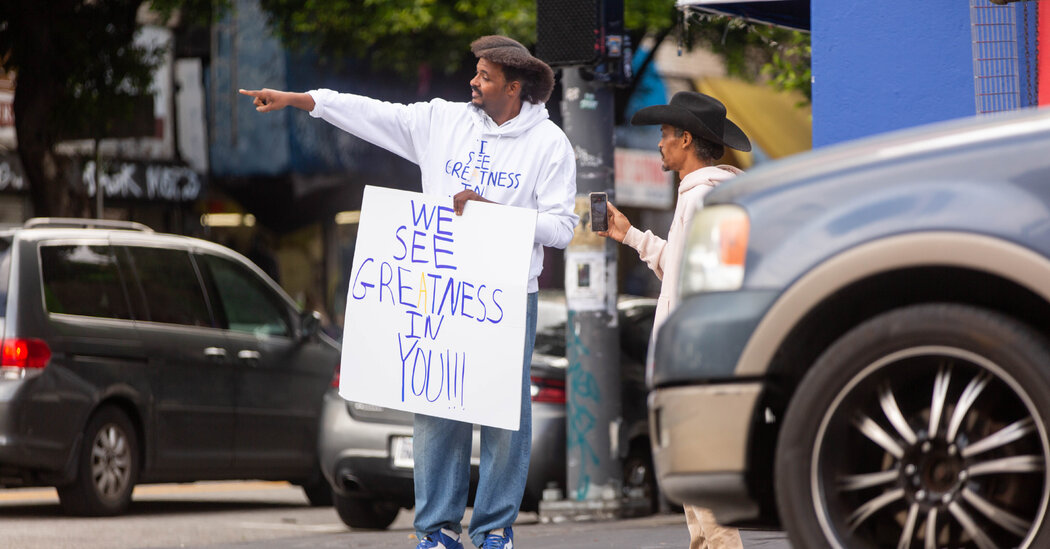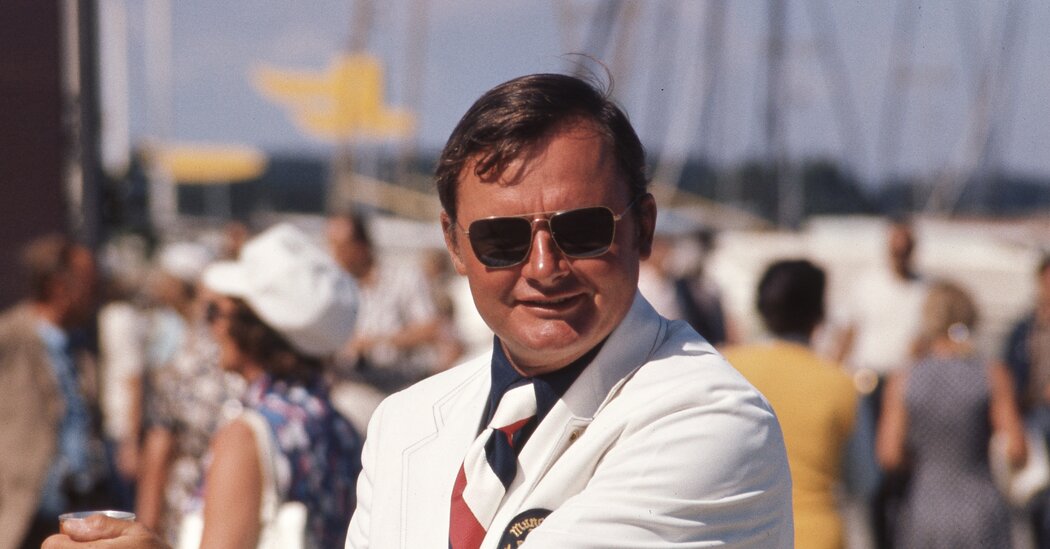Carlos Alcaraz Has Been Studying the Grass Court Masters. That Means Andy Murray.
Carlos Alcaraz took a little time to rest after coming up short in the French Open last month, and then he embarked on the next step toward strengthening one of the few remaining weaknesses in his tennis development — playing on grass.
For Alcaraz, the 20-year-old world No. 1, that meant getting enough training sessions and matches on the surface that is at once the most traditional and most quirky in the sport. It also meant hours of watching videos of Andy Murray, the two-time Wimbledon champion and one of the masters of grass court tennis.
On a day of rain that caused the cancellation or suspension of nearly every match not contested on the two covered courts at the All England Club, Alcaraz showed that his homework was paying off, and Murray provided the young Spaniard with a fresh batch of study material.
Alcaraz has never advanced past the round of 16 at Wimbledon, but he has left no doubt about his goals for his third go-round at this most venerated of tennis competitions.
“To win the tournament,” he said after the 6-0, 6-2, 7-5 pounding he delivered to Jeremy Chardy of France. “I have a lot of confidence right now.”
An afternoon of play against Chardy, who had announced that he planned to retire after this tournament, was sure to help with that. There was little chance that Chardy was going to provide much of a challenge for Alcaraz at 36 years old, ranked 542nd in the world, and with just one tour level win this year.
But for Alcaraz, who grew up mostly playing on red clay, the value of the day came not from the difficulty of his opponent. It came from spending more time on the sport’s most beguiling surface. With each match at Wimbledon Alcaraz gets closer to the inevitable — when the most talented young player becomes every bit as good on grass as he is everywhere else.
This is where watching videos of Murray comes in. Alcaraz knows how to hit a tennis ball as well as and as hard as anyone, and his drop shot is as good as it gets on clay and hard courts. He’s also just about the fastest player in the game, especially on clay and hard courts. But he has said he needs to learn how to adapt his speed and his repertoire of shots to the grass.
Few players have shown how to do that better than Murray, who won the men’s singles title at Wimbledon in 2013 and 2016, and showed why Tuesday afternoon in his 6-3, 6-0, 6-1 dismantling of Ryan Peniston, a fellow Briton.
There are others who have conquered grass, of course, namely Roger Federer, who won a record eight men’s singles titles at Wimbledon and spent the afternoon chatting quietly in the front row of the royal box with Catherine, Princess of Wales, after he was celebrated with a video and a standing ovation. Alcaraz has studied his matches, too.
And then there is Novak Djokovic, who has won the last four singles titles here, seven overall, and is on a 29-match Wimbledon winning streak. The problem with studying Djokovic is that he moves differently than everyone else on grass.
Djokovic has somehow figured out how to glide and slide as though he were on clay or a hard court. When others try to play that way, they often end up on their backsides or with a strained groin. It is a style of grass court tennis that should come with a “don’t try this” warning.
Alcaraz didn’t. Not on his way to the title at the grass court tuneup at Queen’s Club two weeks ago, or against Chardy on Tuesday, when he displayed plenty of signs of his Murray/Federer imitation game.
Alcaraz took on balls ever so slightly earlier, a necessary move since they barely bounce on grass. He decelerated and turned with a series of quick stutter steps instead of his usual lightning quick plant-and-pivot. He showed off his improving serve, firing 10 aces, with plenty of them sliding off the court, including a final one on match point into the deep-wide corner of the service box that slid off the court before Chardy could move for it.
“Every time that I get out to the court playing, it’s better for me,” he said when it was over. “I get more experience that is really, really important on that surface.”
Murray does not lack for experience on grass and has almost always looked comfortable at the All England Club, making the third round in his debut in the main draw in 2005, when he was just 18 years old. Tuesday’s win over Peniston provided plenty of grass court study tips.
Alcaraz often talks about how he begins every match wanting to play aggressively. Murray showed that on grass, aggression can take many forms beyond Alcaraz’s crushing forehands.
He played blocked backhand returns of serve that died in the front of the court to set up passing shots and sent drop volleys nearly sideways. In some rallies he produced a series of strokes that passed ever closer to the top of the net, and slid ever lower as they landed on the grass. One passing shot while Peniston was at the net darted toward his feet as though it fell off a table as soon as it passed over the tape. It was all over in two hours and 1 minute, one of Murray’s easier days on Centre Court, though he confessed to feeling nervous early on.
“I like to feel that way,” he said “If I was going on the court and felt flat, didn’t have any emotion when I’m walking out there, that’s something that would probably be a bit wrong.”
When Peniston committed his final error, Murray celebrated with the slightest of fist pumps and a brief wave to the crowd.
He noted that the last time Federer had watched him on Centre Court was in the first round of the 2012 Olympics, when Federer was cheering on his countryman and Murray’s opponent that day, Stan Wawrinka.
“I was glad to get a few claps today,” Murray said.
Murray skipped the French Open to begin his preparations for Wimbledon, the tournament he believes offers him the best chance to play into the second week.
Those chances likely improved Tuesday when the match between his potential opponents, Stefanos Tsitsipas and Dominic Thiem, was suspended shortly after Thiem won the first set. They will likely resume Wednesday, with the winner taking on Murray, almost undoubtedly on Centre Court, Thursday.
Murray said he does not study draws, preferring instead to focus only on his next match rather than waste time on hypotheticals. If he did, he would find a potential opponent in the semifinals who would be familiar with his tricks.
That would be Alcaraz.


